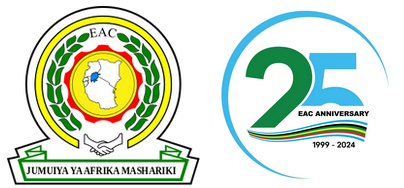Republic of Uganda
Uganda hosts 3 institutions of the Community: the East African Development Bank (EADB) charged with promoting sustainable socio-economic development in East Africa by providing development finance, support and advisory services; the Civil Aviation Safety and Security Oversight Agency (CASSOA), which aims at making air transport services safe, efficient and profitable through the adoption of common policies for the development of civil air transport in the region; and the Inter-University Council for East Africa (IUCEA) that coordinates inter-university cooperation in East Africa.
Key facts
Joined EAC: July 2000 (Founding Member)
Population: 39.0 million (2019 Statistics)
GDP: US$ 33.4 Billion (2019 Statistics)
Official language: Kiswahili, English
Timezone: GMT + 3hr
Currency: Ugandan Shilling (Ush)
Geography
Area: 236,000 sq. km
Coastline: None
Capital city: Kampala
Population density (per sq. km): 173
Uganda is a landlocked country lying astride the equator. It is bordered (clockwise from north) by Sudan, Kenya, United Republic of Tanzania, Rwanda and the Democratic Republic of Congo.
Languages
The official languages are English and Kiswahili; Kiswahili and Luganda are widely spoken and there are several other African languages.
Communications
Country code 256 (no area codes); internet domain ‘.ug’.
Public holidays
New Year’s Day, Liberation Day (26 January), International Women’s Day (8 March), Labour Day (1 May), Uganda Martyrs’ Day (3 June), National Heroes’ Day (9 June), Independence Day (9 October), Christmas Day and Boxing Day.
Religious festivals whose dates vary from year to year include Good Friday, Easter Monday, Eid al-Fitr (End of Ramadan) and Eid al-Adha (Feast of the Sacrifice).
Transport
Some 70,750 km of roads radiate from Kampala, 23% of which are paved.
The railway network extends over some 260 km. At the end of 1993, passenger services between Kampala and Kenya were resumed after a break of 15 years.
Entebbe International Airport is 35 km south-west of Kampala.
International relations
Uganda is a member of the African, Caribbean and Pacific Group of States, African Union, Common Market for Eastern and Southern Africa, The Commonwealth, Non-Aligned Movement, Organisation of Islamic Cooperation, United Nations and World Trade Organization. Uganda is also a member of the Intergovernmental Authority on Development, which was established in 1986 by the six countries in the Horn of Africa to combat drought and desertification and promote food security in the region.
Topography
Water, with swampland, covers nearly 20% of the surface area. The largest lakes include Lake George, Lake Kyoga, and parts of Lakes Victoria, Albert and Edward. From its source in Lake Victoria, the White Nile flows northwards through the country. Mountains include the high Rwenzori range in the west (Margherita Peak on Mount Stanley is 5,110 metres) and Mount Elgon (4,253 metres) in the east. The country is popularly known as the ‘the Pearl of Africa’.
Climate
Equatorial, tempered with breezes and showers. Cooler in the higher areas. Heavy rain from March to May, and in October and November; little rainfall in the north-east.
Environment
The most significant issues are: draining of wetlands for agricultural use; overgrazing, soil erosion and deforestation; water hyacinth infestation in Lake Victoria; and poaching.
Vegetation
Much of the country, being so well-watered, is richly fertile; there is arid semi-desert in the north-east. Most of the country’s vegetation is savannah with tropical forests in areas of high rainfall. Drought-resistant bush, grasses and succulents grow in the north-east. Forest covers 14% of the land area, having declined at 2.3% p.a. 1990-2010. Arable land comprises 35% and permanent cropland 11% of the total land area.
Wildlife
Uganda has 7,200 sq. km of national parks and game reserves, reflecting the extraordinary diversity of the country which comprises lakes, swamps, dense grassland, woodland, rolling plains, forests and mountains, there is a rich variety of wildlife.
